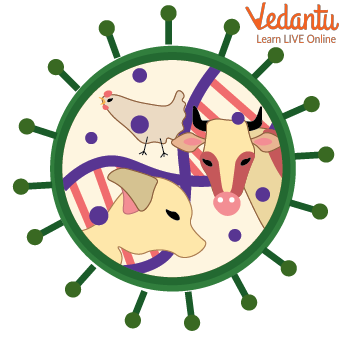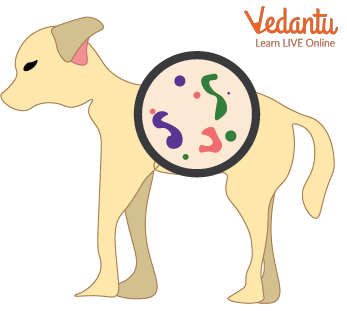




Introduction to Animals Diseases
Have you ever thought that there are some similarities between humans and animals? One of the similarities is that animals other than humans can also suffer from different types of animal diseases, the same as humans. People are worried mainly about the diseases that directly affect animals that are used for food, the diseases that affect pets, and the diseases that can be spread from animals to people.
Similarly to human diseases, animal diseases are divided into two groups as infectious animal diseases and noninfectious animal diseases. The doctors who treat the animal for various animal diseases caused by bacteria or any other disease or illness are known as veterinarians. These veterinarians can treat many diseases.
Let us read about these animal diseases in detail !
Types of Animal Diseases
In this article, we will discuss two types of animal diseases. First is Infectious diseases and another is Non-infectious diseases.
Infectious Diseases
The diseases that spread from one animal to another are called infectious diseases. These diseases are caused by particles known as viruses and tiny living things such as bacteria, protozoans, fungi, and worms.
Rabies is one of the most dangerous animal diseases. Rabies directly attacks the brain. A virus in the saliva of animals with bacteria causing rabies can also cause the disease. Rabies often spreads through animal bites. People can also get rabies disease. Luckily, there is a vaccine that can protect people as well as animals from rabies.
The other virus causes Newcastle disease, which is a disease that affects chickens, turkeys, as well as pet birds. The symptoms of Newcastle disease are the same as that of influenza or flu. People can also be affected by this disease from sick birds.
Tuberculosis is an animal disease caused by bacteria and mainly affects cattle. The disease is harmful to the lungs. To people, tuberculosis can spread through the milk of cows.

Animal Diseases
Non-Infectious Diseases
The diseases that cannot be spread from one animal to another are called non-infectious diseases. The non-infectious diseases in animals are much similar to that of the non-infectious diseases in humans.
Non-infectious Diseases Examples:
A disease like cancer can affect many older dogs, cats, and other animals. Pets and many other wild animals can also suffer from arteriosclerosis. This arteriosclerosis is a disease in which the blood vessels become blocked. A cataract is a disease in which many animals over their eyes can develop cloudy growths.

Animal disease due to bacteria
Animal Diseases Caused by Bacteria
List of Animal Diseases and Their Causes
Below mentioned are the animal diseases caused by bacteria:
Anthrax
Black quarter(commonly known as black leg disease)
Foot and mouth disease
Rabies (also called Mad dog disease)
Bluetongue
Pox
Brucellosis of sheep
Tetanus
Below mentioned are the animal diseases caused by virus:
African horse sickness
African swine fever (ASF)
Bluetongue
Equine infectious anaemia
Summary
Animal diseases can be caused by bacteria, viruses, parasites, fungi, nutritional deficiencies, chemical poisons, and many unknown causes. The doctors who treat animals for various animal diseases are known as veterinarians. Infectious diseases are diseases that spread from one animal to another. Non-infectious diseases are diseases that cannot be spread from one animal to another. One of the most dangerous animal diseases is rabies. This spreads through animal bites. Cancer is an example of a non-infectious disease in animals.
FAQs on Animals Diseases
1. Give examples of the non-infectious diseases.
The examples of non-infectious diseases include:
Dietary issues (e.g., allergy)
Dietary indiscretion, such as foreign body ingestion.
Gastrointestinal obstruction
The mucosal injury (eg, gastric ulcers)
Intestinal dysbiosis
Enzyme deficiencies
congenital defects
2. Give the cause for the animal disease.
The main causes of animal diseases are as follows:
The infection through the bacterias. Bacteria are single-cell organisms that are responsible for different types of illnesses.
The infection through the viruses. The virus is way smaller than bacteria but can cause many different diseases.
The infection through the fungi.
The infection through the parasites.
3. What is the most common disease among animals?
The most common diseases among animals are roundworms, ringworm, hookworms, parrot fever, lyme disease, etc.









